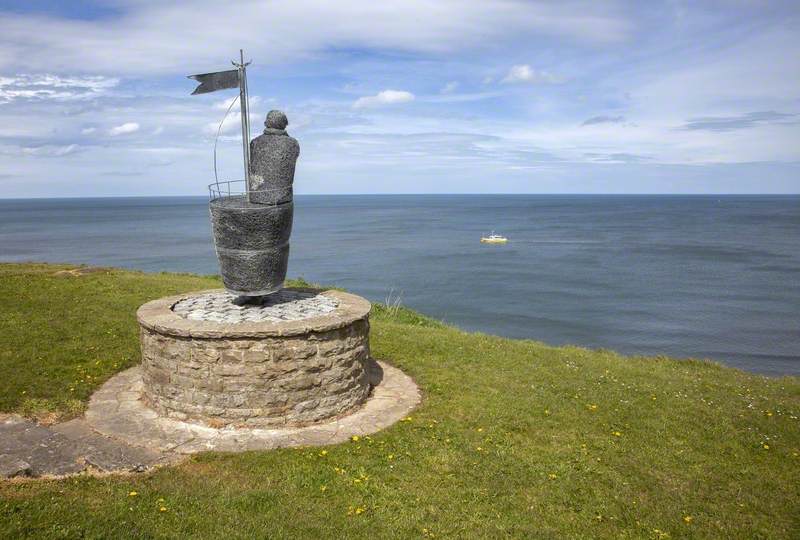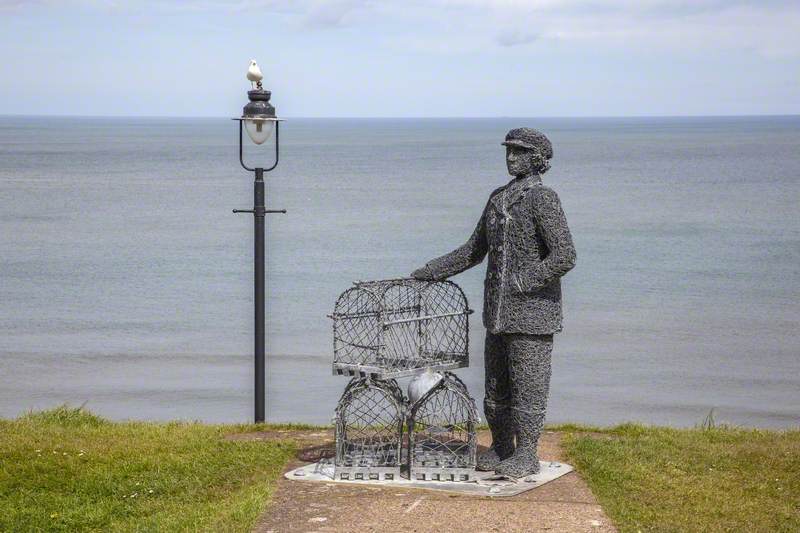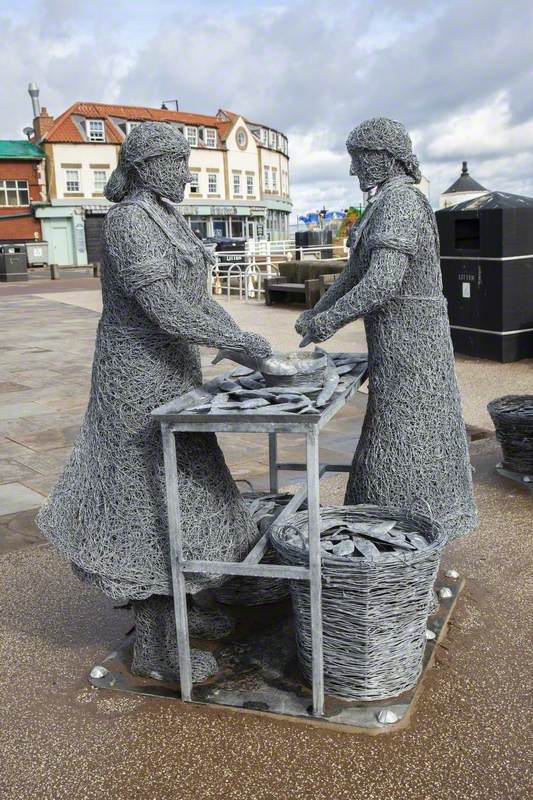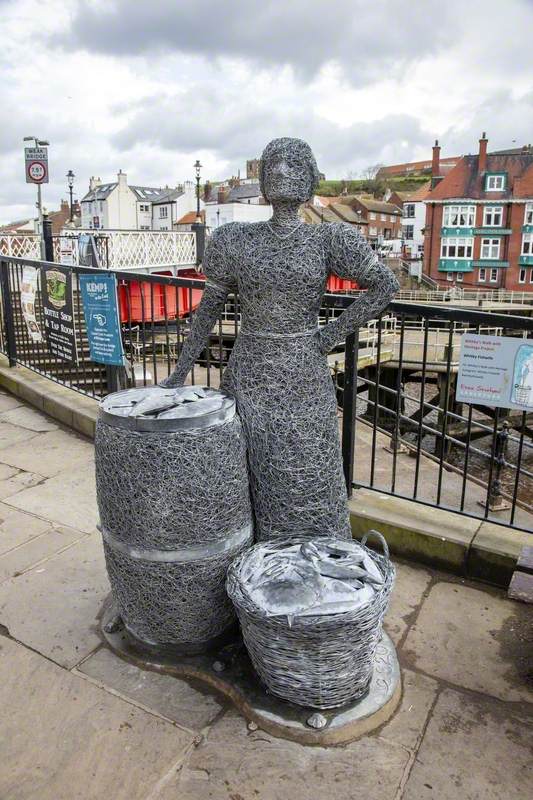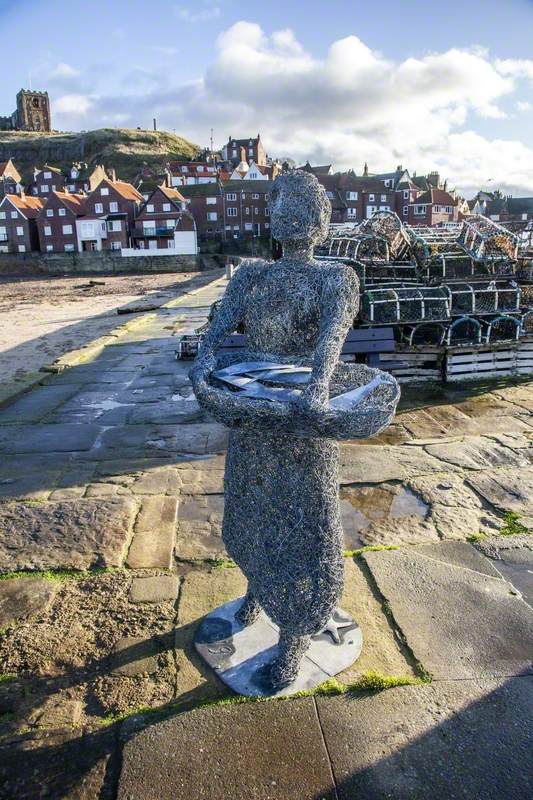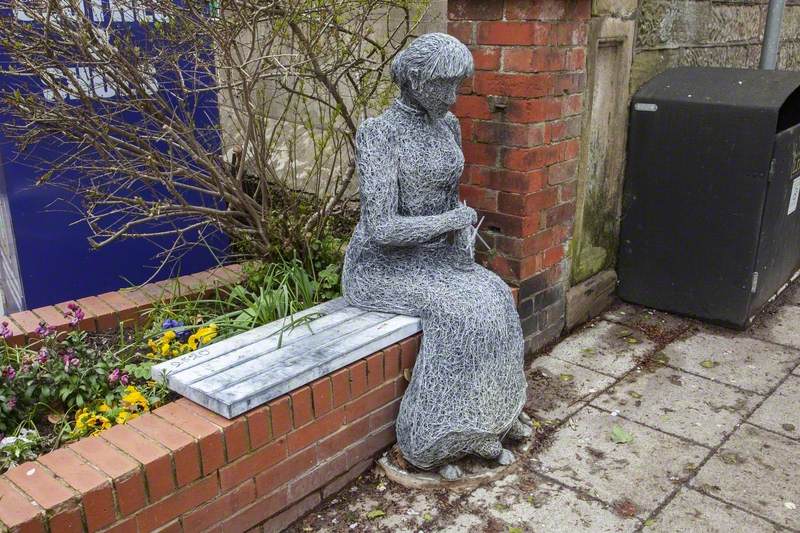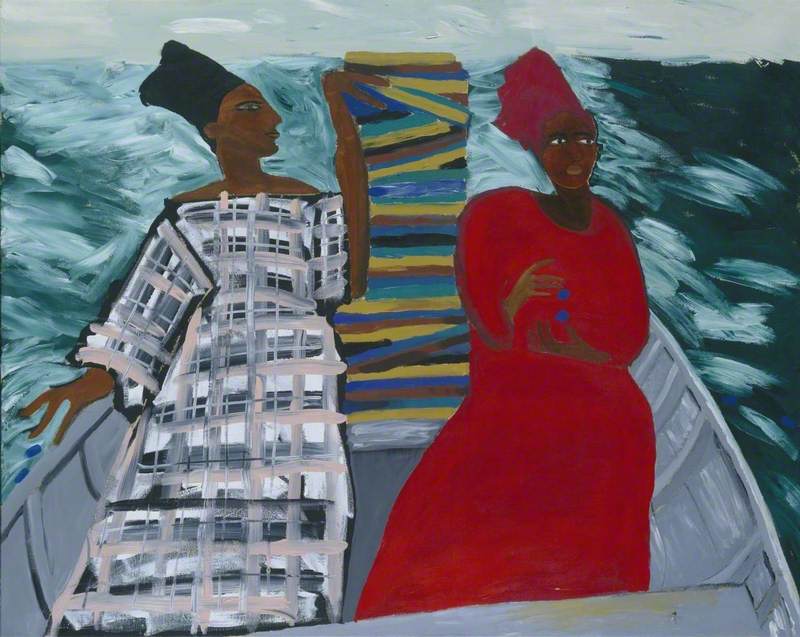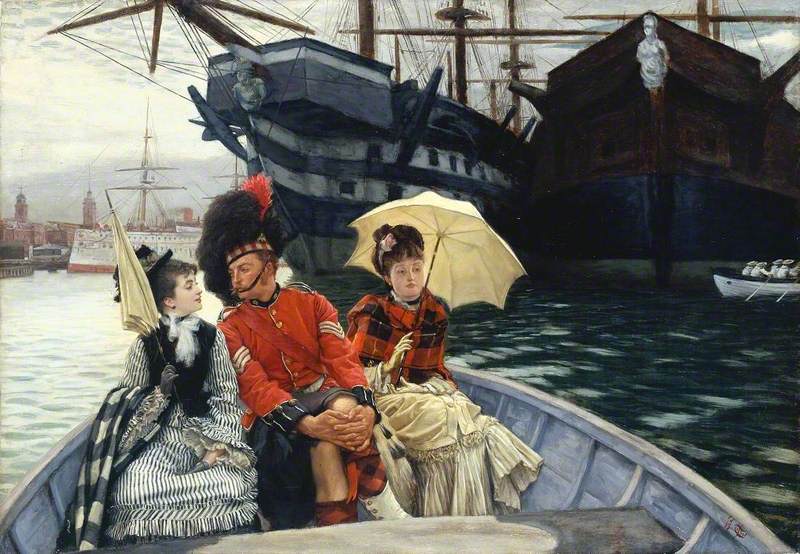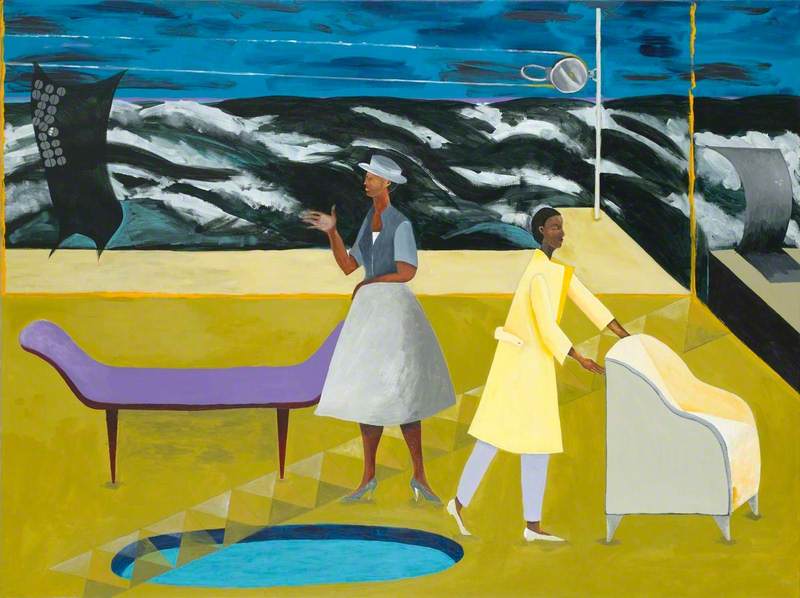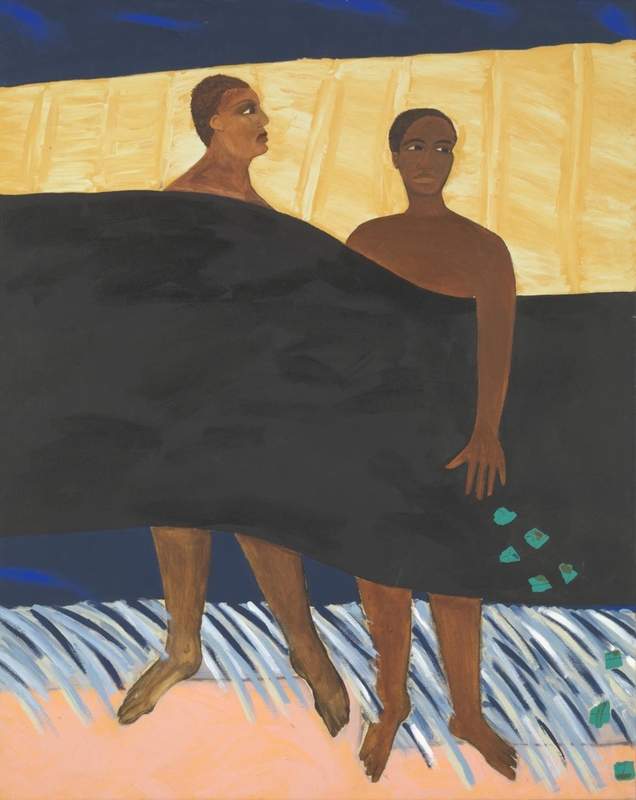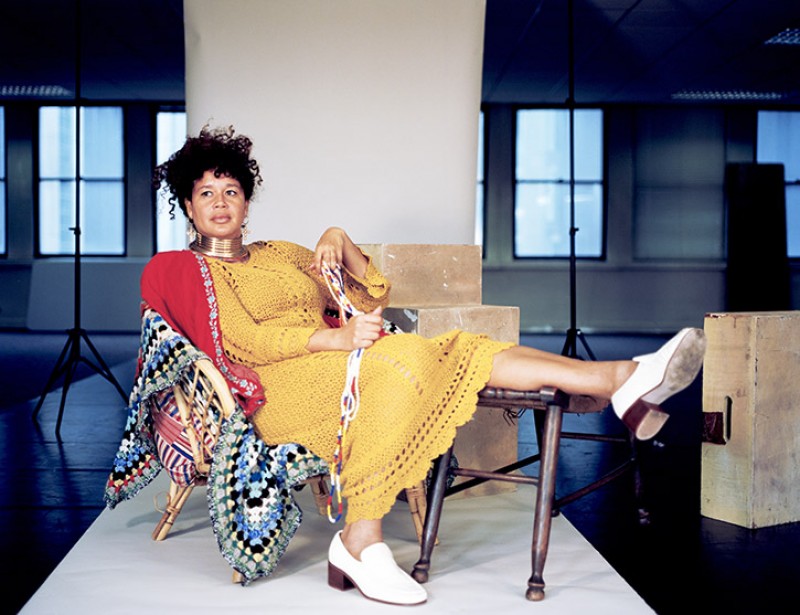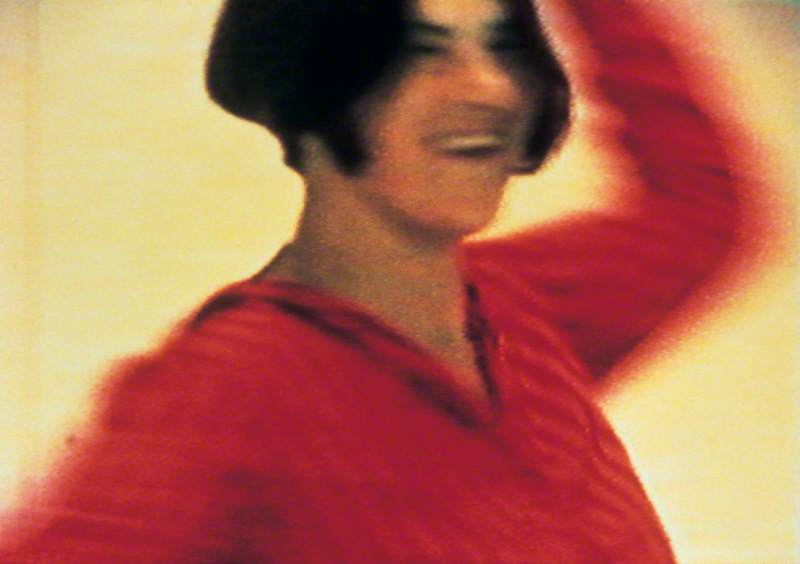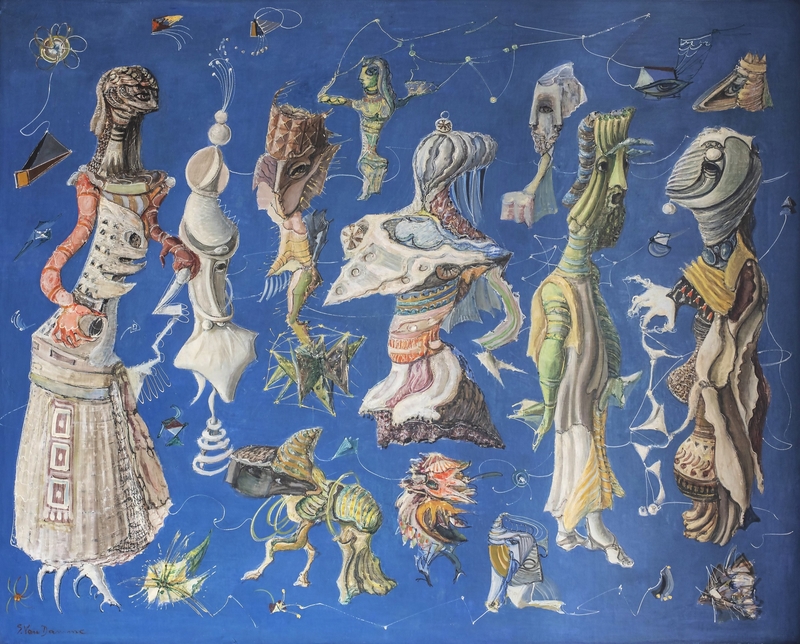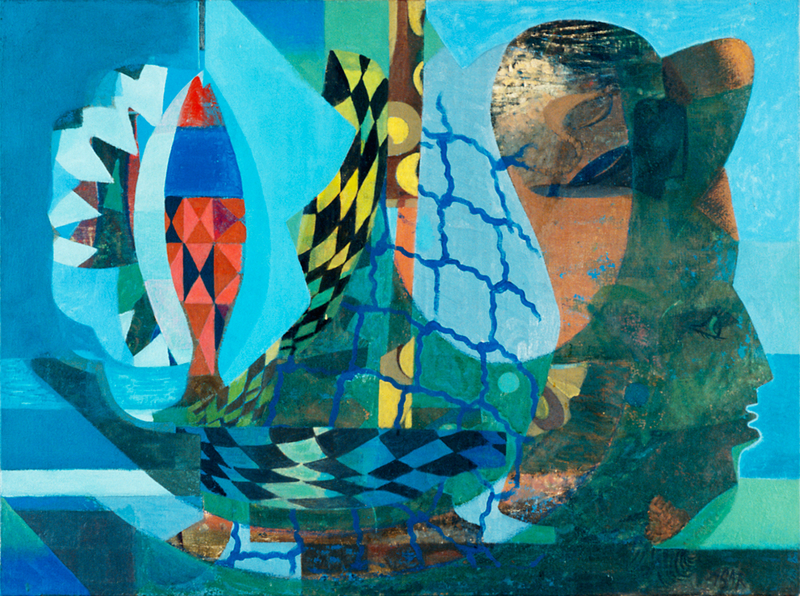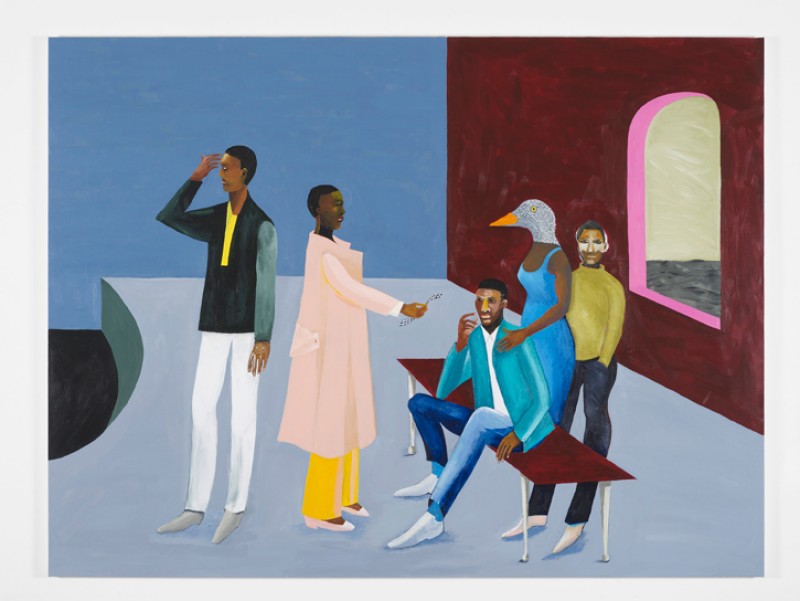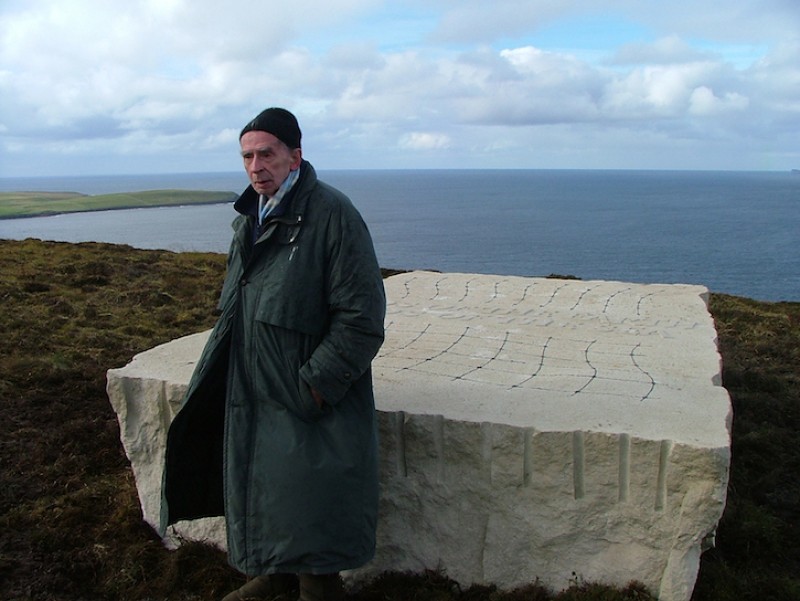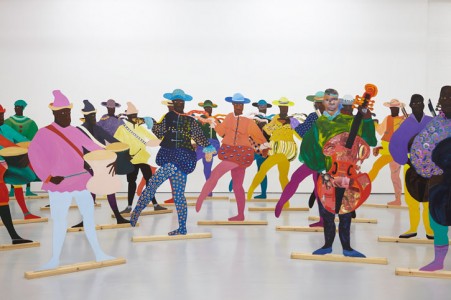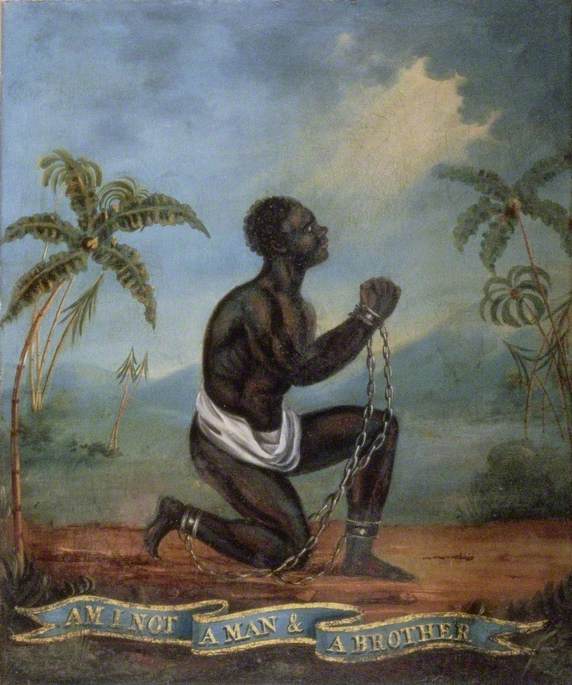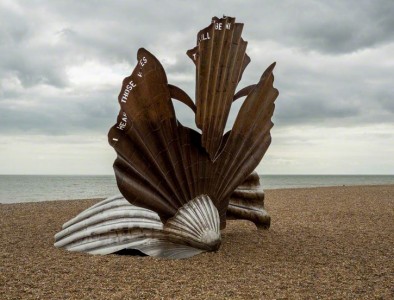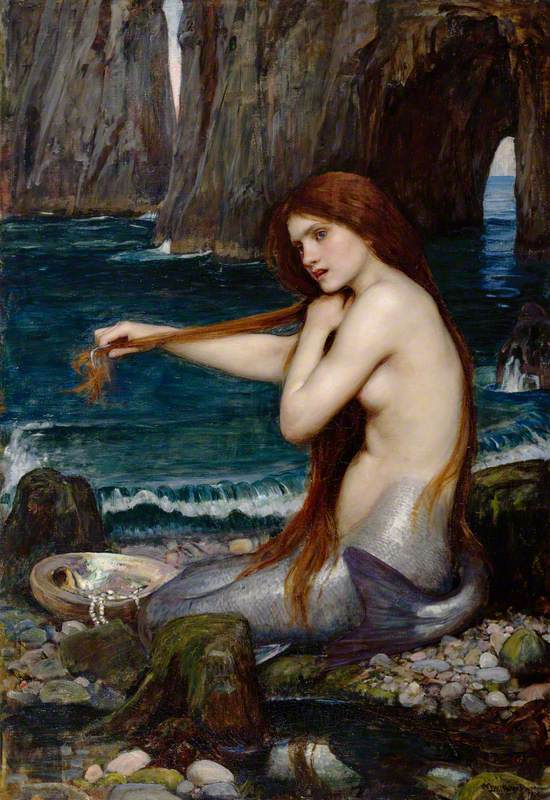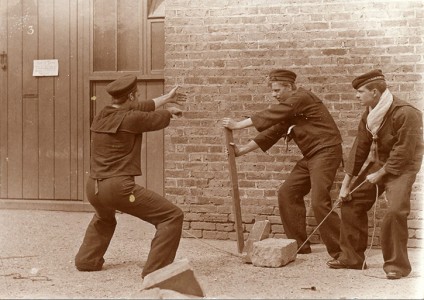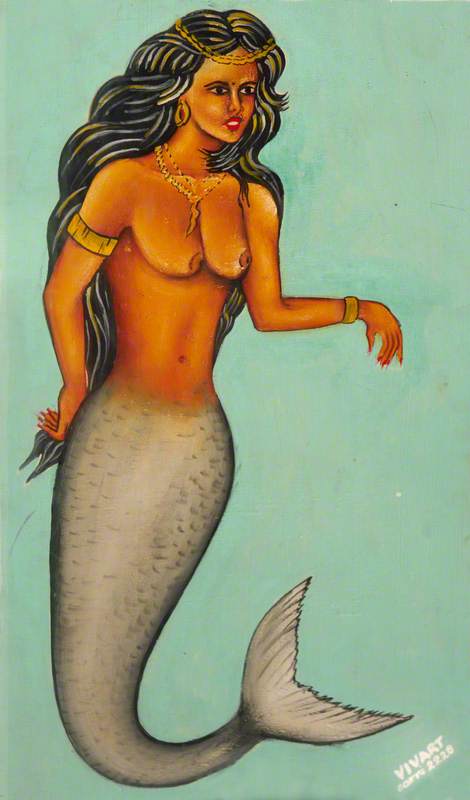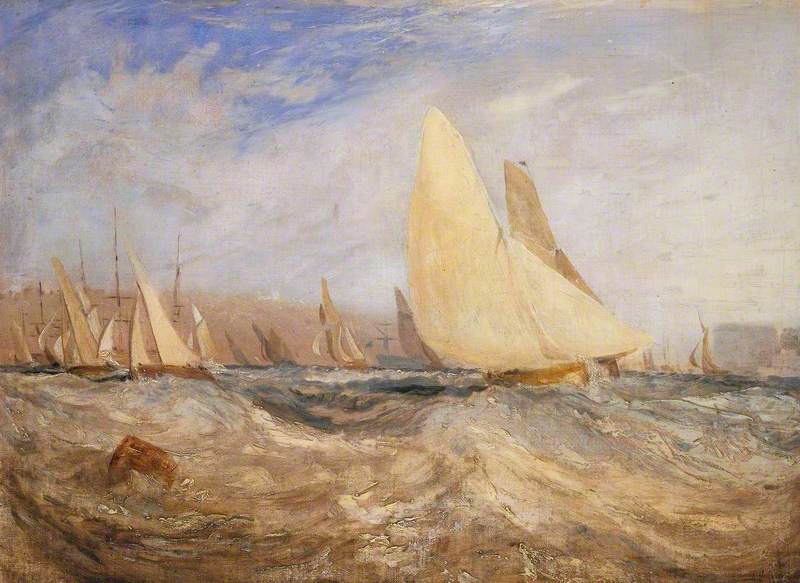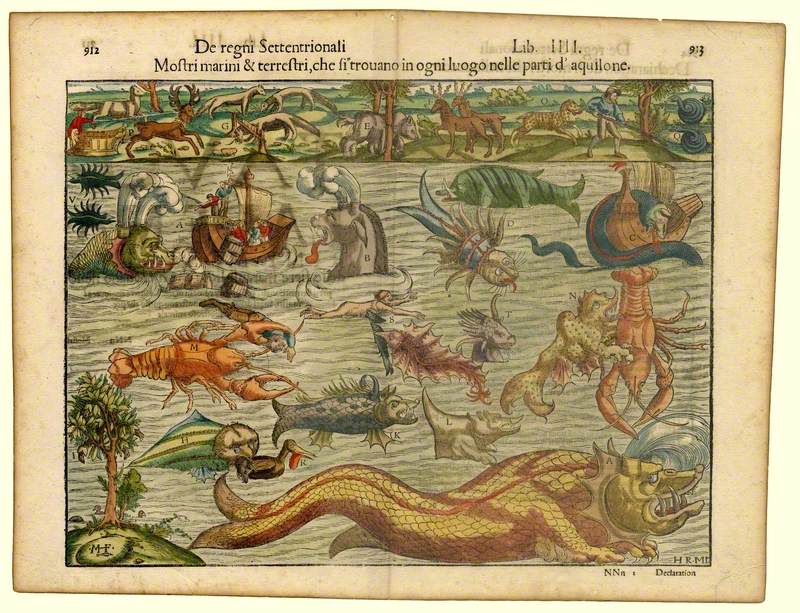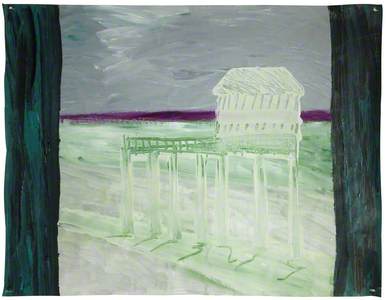Women's relationship with the sea has varied throughout the ages, social classes and cultures of the world. The sea has the connotations of mystery and fear – an unforgiving entity that cannot be controlled. The artists Lubaina Himid and Emma Stothard are two practitioners who have used their different media to depict women's relationships with the sea.
Emma Stothard is a sculptor who works with galvanised wire, silver, bronze and woven willow. Stothard explains that the galvanised wire allows for a wider variety of finishes than the other materials that she likes to use in her work. She has spent most of her adult life living in coastal areas associated with the sea: she was born in Hull, grew up in Kilnsea, studied in Southampton and has spent most of her adult life in Whitby.
Each of Stothard's large pieces requires her to weld a strong steel armature to support the woven 'skin', then she sculpts the final stages using an angle grinder, mallets and pliers, and her hands.
The Whitby Sculpture Trail, installed in autumn 2021, is a series of nine sculptures of the town's heroes, including Skipper Dora, Gansey Knitter, Whitby Fishwife and Herring Girls. These pieces focus on the important role of women in the fishing community and the coastal trade.
Skipper Dora is a homage to Dora Walker (1890–1980) who moved to Whitby during the Second World War on medical advice because of her bronchial problems. Dora Walker bought a boat, the Good Faith, and started fishing. When she qualified as a pilot for boats she began leading other boats through the minefields and became the only woman skipper to hold her licence in the North Sea throughout the war.
Skipper Dora is dressed in traditional sea-faring clothing, and the sculpture incorporates cages for her catches, a protective helmet as used in the war, and a crab. The sculpture is located just beyond the Whalebone Arch where she stands and scans the horizon, ever watchful.
The sculpture Herring Girls, situated next to the Whitby bandstand, is a reminder of the tough, independent women of the eighteenth and nineteenth centuries who followed the shipping fleet by train, always ready to gut and pack the fish when the fleet came in. The women usually worked in teams of threes, with two people gutting the fish while the final woman packed them into the barrels.
The Whitby Fishwife on New Quay Road stands ready with a barrel of fish. Fishermen's wives were generally hardworking and adaptable people who managed the general household and family duties as well as baiting and selling the fishing catch to the public.
The head held high, and hand-on-hip stance of the Whitby Fishwife suggest she means business, as she stands behind her barrel and baskets of assorted fish and crabs. She is there to work.
Another figure in the Whitby Sculpture Trail of nine fishing-related models is the Fisherwife. She stands at Tate Hill Pier, with a basket of fish in hand, looking out to sea.
The final female figure in the Whitby Sculpture Trail is the Gansey Knitter. This woman is sitting on top of a wall creating knitwear traditionally made for fishermen. The garments are seamless, knitted in the round, using straight double-pointed pins, and fine, tightly spun worsted yarn: this resulted in a unique, hardwearing, weatherproof garment for the harsh weather. Each area of the country had their own designs, and these were useful if a fisherman was lost at sea and later recovered because the pattern would help to identify him.
Emma Stothard's sculptures have a quality of resilience, like the working-class women depicted, and they work well within the natural landscape of the Whitby coastline.
Lubaina Himid's Between the Two my Heart is Balanced shows a different form of interaction with the sea. The two Black women visualised in the boat are imagining an unfamiliar way of existing by working together to destroy maps and charts – they then drop the torn fragments of the dismantled reality into the ocean and move forwards. Himid's painting is part of her dedication to uncovering marginalised and silenced figures, histories and cultural expressions.
Between the Two my Heart is Balanced is a re-imagining of James Tissot's c.1877 work Portsmouth Dockyard, featuring a white Highland soldier torn between two prospective white women lovers.
Both works use the same intimate setting – where the viewer is located in the boat with the subjects. Himid's painting suggests the magnitude of the efforts of the Black women to obtain the acceptance and recognition encountered by travellers navigating the world by sea.
In Le Rodeur: The Pulley, Himid again depicts two Black women at sea, with the wildness of the water behind them. They are in a world of blurred boundaries, and their relationship to each other is unclear. The work's title indicates a repositioning of power: a 'pulley' is used to move things, and 'Le Rodeur' invites contemplation of the horrors associated with the Atlantic slave trade.
In 1819, a French slave ship named Le Rodeur was struck with an illness – most of the people on board, crew and chattel, were rendered blind. Subsequently, the blinded, enslaved Africans were deemed more valuable dead than alive, so nearly 40 of them were thrown overboard for the insurance payouts.
The bright colour palette of Le Rodeur: The Pulley, and the modern appearance of the figures shown, mask the darkness of the historical subject matter.
Himid and Stothard invite the viewer to imagine the history and lives of the people depicted (or missing) in their artworks. They encourage the spectators to ask questions about who is present, what they are doing, and why. Both artists are entreating the audience to join a conversation as they view the artists' own re-imagination of history using the media of sculpture and painting.
In the same way that Stothard draws attention to the overlooked and marginalised working-class women associated with the fishing community, Himid is centring women who were a part of unspeakable historical events with her artwork, and re-imagining Black women's roles in history. Both artists are naming the un-named, forgotten and overlooked people in the margins of society. The artworks of Stothard and Himid connect the past to the present, by surrounding the audience with an experience that reveals a trace of life as it was for others.
Himid and Stothard invite people to fully enter into the scenarios depicted in their work, to be part of the landscape. The sound of the sea is ever-present on Stothard's outdoor Whitby Sculpture Trail. Himid's 2021 exhibition at Tate Modern – which included the soundscape of the sea, ships and oars – encouraged the audience to bring their own memories and experiences to the viewing of these pieces. These artworks are immersive, they are created for all the senses – evoking the women depicted, their experiences intertwined with the sea.
Marjorie H. Morgan, playwright, director, producer and journalist

